A Journey for a Better Life & Justice






 BY WALTER EWING
BY WALTER EWING
On September 28, Senator Alex Padilla (D-CA) introduced a bill in Congress that would allow millions of immigrants who have lived in the United States for many years to become Lawful Permanent Residents (LPRs). This pathway to LPR status (also known as a green card) would benefit both long-term undocumented immi grants and individuals who have been present in the country for years under a temporary immigration status, such as temporary workers, beneficiaries of Temporary Protected Status (TPS), and Dreamers.
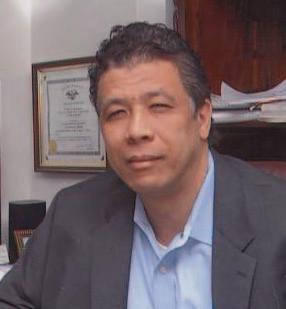

Washington, DC: A new report from Detention Watch Network, the Immigrant Legal Resource Center, and Ceres Policy Research outlines the direct link between Immigration and Customs Enforcement (ICE) arrests and the availability and capacity of immigration detention centers. The report — If You Build It, ICE Will Fill It —demonstrates that immigrants in counties with more detention space and counties with an overall higher carceral capacity are significantly more likely to be arrested and detained by ICE.
“We need to defund and end immigra tion detention and instead, invest in resources that support and protect our communities,” said Gabriela Viera, advocacy manager at Detention Watch Network. “The evidence in our report shows that the mere existence of deten tion centers leads to increased arrests, funneling people into an inhumane sys tem where neglect, abuse, and violence are endemic. Our communities become safer when ICE detention facilities are shut down, plain and simple."
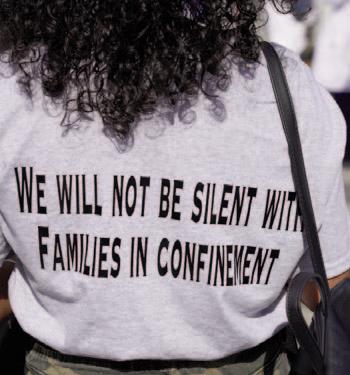
“Our research underscores what we




NEWYORK: In commemoration of Hispanic Heritage Month, NYC Department of Transportation Commissioner Ydanis Rodriguez, Mayor’s Office of Immigrant Affairs Commissioner Manuel Castro and Mayor’s Office for International Affairs Commissioner Edward Mermelstein on Thursday, October 13 announced that the national medallions installed along the Avenue of the Americas would be restored. The new medallions, which depict the emblem of each of the nations in the Western Hemisphere, will once again adorn Sixth Avenue between 42nd and 59th Streets. DOT will create 35 new medallions to represent each country (see medallions illustrated below). Originally installed in 1959, only 18 of the original medallions remain along the street today.
“Our administration is so excited to honor Hispanic Heritage Month by doing something that the city’s immigrant com munities have been asking for so long: restoring the national medallions along the Avenue or the Americas,” said New York City Mayor Eric Adams. “These medallions represent the best of New York City — people coming from all over for a better life, helping to make this the greatest city in the world.”
“New York City was built by immi grants, so it is important that we recog nize and preserve all symbolic icons that represent the incredible diversity of our communities,” said DOT Commissioner Ydanis Rodriguez. “In addition to the people of the City, I want to thank the leaders of the proud nations of our hemi sphere, some of whom would attend events at the United Nations, only to be greeted by crumbling signage of their countries along one of Manhattan’s major avenues. As we celebrate Hispanic Heritage month, we are granti ng the people of those countries – resi dents and visitors alike -- the respect and honor they have earned. I also thank and salute the leadership of Mayor Eric Adams: when he instructed us to ‘get stuff done,’ this is what he had in mind!”
“The restoration of the national medal lions is a symbol of New York City’s role as a global city and the home of immi grants,” said Edward Mermelstein, Commissioner, NYC Mayor’s Office for International Affairs. “The medal lions were first created after WWII to
show the importance of global unity and connections. This message is needed more than ever today as the world contin ues to face challenges. Working together is the only viable solution. I am thrilled the Adams Administration, through my office, DOT, and NYC Mayor’s Office of Immigrant Affairs, made this initiative happen.”

“The restoration of the national medal lions along Manhattan’s Avenue of the Americas is a timely reminder of New York City’s rich history of welcoming many around the world,” said Manuel Castro, Commissioner of the Mayor’s Office of Immigrant Affairs. “My office is proud to work with DOT and International Affairs on this initiative. I look forward to the installation of the medallions and their impact for decades to come.”
New York City Mayor Fiorello LaGuardia renamed Sixth Avenue “Avenue of the Americas” in 1945. Originally installed during the Eisenhower presidency and the Administration of Mayor Robert Wagner, nearly 300 medallions along the avenue celebrated a unified hemisphere after the divisions of the Second World War. However, over ensuing decades, the medallions were largely ignored: made of materials that were not easily accessi ble or replaced, the medallions were never the subject of regular maintenance and fell into disrepair with rust and cor rosion, with many removed for safety concerns. Under the Administration of Mayor Eric Adams, committed to equi
table representation throughout the city, NYC DOT Commissioner Rodriguez took a fresh look at the permanent restoration of the medallions.
From street and plaza co-naming to translating street signs in historically multilingual neighborhoods, the restora tion of the Avenue of the Americas medallions provides an opportunity for the City to reflect the many backgrounds and nationalities of those who call New York City home.
“These 35 new medallions depict the respective emblems that represent each country in the Americas, all of which are represented here in New York City,” said Congressman Adriano Espaillat (NY13). “I commend Mayor Adams and Commissioner Rodriguez on today’s efforts and for their continued committed to ensuring equitable representation throughout the city, from street and plaza co-namings to translating street signs in historically multilingual neighborhoods. Representation matters and reflects the beauty, diversity, and richness of the cul tures that make up the fabric of our com munities—and the nationalities of those who call New York City home.”
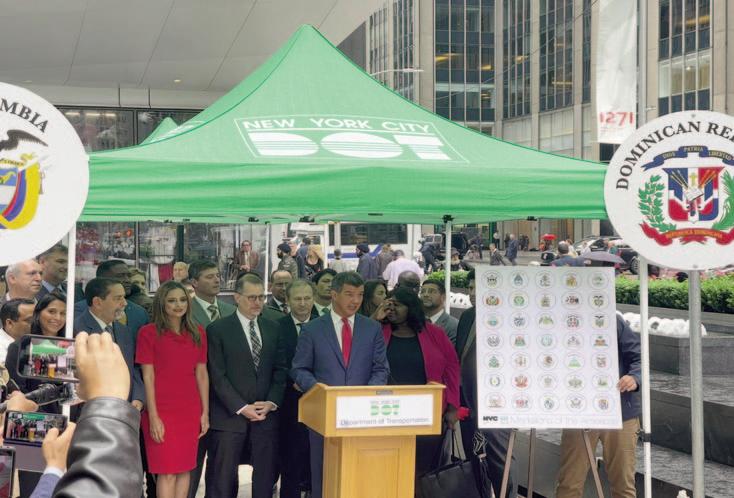
“For almost three-quarters of a century, the Avenue of the Americas has stood as a testament to the myriad contributions the millions of Latinx, Caribbean, Canadian, and all people of the Americas have made to the vibrant multicultural ism that has made New York City the greatest city in the world. The restoration of these medallions will not only give New Yorkers who have connections to
the Northern, Central, and South American nations beautiful new symbols of their inclusion in our city but also will also be a greeting to millions of travelers who will now have a place in Manhattan to call their own. I commend Commissioner Rodriguez and the team at DOT for understanding the importance of Avenue of the Americas and for making this restoration of the medallions a prior ity,” said Manhattan Borough President Mark Levine
The fabric of New York City is shaped by our diverse communities and national ities, and I applaud the NYC DOT and Commissioner Ydanis Rodriguez for restoring the National Medallions along the Avenue of the Americas. This is a welcome addition during Hispanic Heritage Month to showcase the incredi ble achievements, history and culture of the Western Hemisphere while showing that NYC will always be welcoming and inclusive," said Assemblymember Rodneyse Bichotte Hermelyn
"New York is the birthplace of immi grants, and these medallions have long represented our city's rich culture and diversity. Today's restoration is long overdue, and I applaud Commissioner Rodriguez for taking this necessary step. Our immigrant and Hispanic communi ties have contributed so much to our city and country. We owe it to them to recog nize their hard work and achievements,” said Assemblymember Kenny Burgos
“!Viva México Y Nueva York! I would like to extend my sincere congratulations to Mayor Adams and the City of New York for the return and restoration of these medallions located at the inconic Avenue of the Americas. Actions such as these make New York the most diverse and inclusive city in the world,” said, Jorge Islas, Consul General of Mexico in New York
As a publication that has advocated for immigrants for almost 25 years, The Immigrant’s Journal (English, Spanish, and French Creole) congratulates Commissioner Ydanis Rodriguez, in the restoration of the Avenue of the Americas Medallions. Commissioner Rodriguez has proven to be a champion for immi grants. New York City is a city of immi grants, and everyone should feel wel come. We commend the Commissioner for this inclusive and important initia tive.l
Morethan a decade after the U.S. Department of Homeland Security (DHS) first created the Deferred Action for Childhood Arrivals (DACA) program to shield cer tain undocumented youth from deporta tion, it remains the subject of ongoing lit igation. This has limited its impact and created uncertainty for the nearly 600,000 people who benefit from its pro tections.
On October 5, the U.S. Court of Appeals for the Fifth Circuit affirmed a lower court decision finding that DACA is unlawful and was implemented con trary to federal law. While the program will continue for its current beneficiaries in the short term, many believe that the latest decision has set the stage for a full termination of the program by federal courts that have proven hostile to DACA for years.
Undocumented youth with DACA are experiencing a crisis that only Congress can fully address. The U.S. Senate has between now and the end of 2022 to finally get things right.
DACA was first created in 2012 through a DHS memorandum, which has been the subject of several legal challenges over the last 10 years. In 2018, Texas and seven other states sued to overturn the original program. The case was assigned to Judge Andrew S. Hanen of the Southern District of Texas—the same judge who previously struck down the attempted expansion of DACA and the implementation of a similar program known as the Deferred Action for Parents of Americans, or DAPA.
Judge Hanen struck down the DACA program on July 16 of last year, ordering U.S. Citizenship and Immigration Services to stop issuing any new bene fits. Judge Hanen found DACA unlawful for two reasons. First, the Obama admin istration failed to follow the formal rulemaking process by neglecting to publicly announce DACA and give the public an opportunity to comment. Second—and more important to the recent Fifth Circuit decision—Judge Hanen ruled that the DACA program itself surpassed the
authority given by Congress to DHS in the immigration law.
But recognizing the impact of ending DACA for the more than 600,000 people in the program at the time, Judge Hanen paused the portion of the decision that would have required the agency to termi nate any existing protections or stop renewals while his decision went through the appeals process. This allowed current DACA recipients to keep their benefits but did not allow anyone new to apply even if they were otherwise eligible.
Shortly after the decision in the Texas litigation, the three sets of defendants— the federal government, a group of indi vidual DACA recipients, and the state of New Jersey—appealed the decision to the Fifth Circuit. In the meantime, the Biden administration finalized and pub lished a new regulation intended to shield DACA from litigation challenges. That rule is set to go into effect at the end of October.
The Fifth Circuit agreed with Judge Hanen’s decision, but also sent the case back to his district court for further con sideration of the new rule published by the Biden administration. In doing so, the Fifth Circuit further cemented Texas’ argument that the state’s injury, or basis for standing to file the lawsuit, is based on its discriminatory objection to the presence of noncitizens in the state.
As to the legality of the DACA program itself, the Court held that the 2012 DHS memo did not follow the correct notice and comment procedures, which violates the law. And the Fifth Circuit agreed with Judge Hanen that DHS does not have the
power to put in place a program such as DACA.
This second reason could become the death knell for the DACA program as it currently exists. If the Fifth Circuit thinks the DACA program surpasses the authority Congress granted to DHS, it will likely not matter in the eyes of the court whether the program was born out of a memo or a formal regulation.
While the limited version of DACA will remain in place for the moment, the liti gation challenging the program’s legality will continue. Now, the new rule’s sur vival—and the future of hundreds of thousands of DACA recipients—is in the hands of Judge Hanen, the same judge that previously struck down DAPA, the DACA expansion, and DACA itself. While his decision could be appealed all the way to the U.S. Supreme Court, the direction of the litigation seems clear given the makeup of the Fifth Circuit and the Supreme Court.
With limited options for executive action, and the potential shift in the com position and control of Congress on the horizon, the only viable way to protect undocumented youth is through legisla tive action between now and the end of 2022.
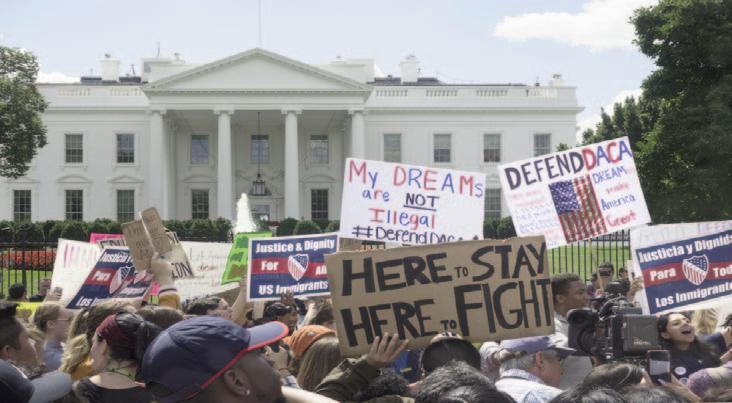
The Biden administration and Senate leaders must come together to use every tool at their disposal to finally craft a per manent solution to protect undocument ed youth across the United States. The time for negotiations is now as the ability of hundreds of thousands to legally remain in the country hangs in the bal ance.l
Sabirov
Email immjournal@aol.com
Visit www.ijlef.org www.askthelawyer.us
Internship positions available throughout the year.
The Immigrant's Journal Legal & Educational Fund, Inc. is an organization dedicated to the educational and economic empowerment of all immigrants and immigrant organizations here in the United States. We at the Journal recog nize the enormous contribution of immigrants to this country economically, socially and polit ically. Since September 11, 2001, however, immigrants have increasingly been discriminat ed against and Congress has passed legisla tion curtailing the rights of immigrants here in the U.S., broadly claiming that immigrants are a threat to ''National Security.'' We at the Journal believe that these charges are unfounded, unsubstantiated and exaggerated.
The Immigrant's Journal Volunteer Intern Program was introduced to give our volunteers the opportunity to work in an immigrant friendly environment while developing the necessary skills for college or law school. They assist our staff in resolving immigration and other legal concerns through personal interviews, radio, email and telephone contact. They also assist the public with citizenship applications and in researching whether or not children of natural ized U.S. citizens have derived citizenship from their parents. Some of our volunteers assist our legal staff by engaging in legal research and writing letters on other legal issues. Volunteer interns are also assigned various other jobs in our Youth Programs. Hours are flexible. Email your cover letter and resume or any questions to immjournal@aol.com

If approached by ICE (Immigration and Customs Enforcement) agents, you have rights!
• You do not have to immediately open the door for ICE and you do not have to speak to ICE.
• From behind the closed door, you may ask them who they are and to show their badge, ID or business card through the window or peephole or to pass it under the closed door.
• You can ask if they have a judicial warrant:
If they say No, you do not have to let them in. You may say, “I do not want to speak with you.”
If they say Yes, you can ask them to slide it under the door. To know if it is a judicial warrant, look to see who signed the warrant.
“Justice” or “Magistrate” in front of them.
• In an emergency, such as a threat to public safety or a threat to someone’s life, ICE can come in without asking your permission. If this happens, you still do not have to speak to ICE.
• If ICE is looking for someone, you do not need to speak. If you choose to speak, you can ask ICE to leave contact information. While you do not need to tell ICE where the person is located, providing false information puts you at risk.
• If ICE enters your home without your permission, you can tell them clearly: “I do not consent to you being in my home. Please leave.” Saying this may not always stop them, but it may help any future legal case.
• If ICE starts to search rooms or items in your home, you can tell them, “I do not consent to your search.” You can continue to repeat this if they continue to search without consent.
• You can tell them if there are children or other vulnerable residents in your home.
• Before you say anything, you can ask, “Am I free to go?”
If they say Yes: you can say,
“I don’t want to answer your questions”
If they say No: you can say,
“I want to remain silent.”
If ICE agents try to search your pockets or belongings, you can say,
“I do not consent to a search.”
If they search you anyway, you cannot physically stop them, but clearly saying it may be important in any future legal case.
This fact sheet gives only general information. It is not legal advice. Consult an attorney for legal advice. English
Call 855-768-8845 for an Immigration Consultation
MORE
Legalservice organizations have sued U.S. Immigration and Customs Enforcement (ICE) for preventing people jailed at four immigra tion detention centers from having mean ingful access to their lawyers. The barri ers to attorney access at these facilities illustrate ICE’s failure to protect the fun damental rights of detained immigrants nationwide.
At any given time, ICE detains tens of thousands of immigrants who are fight ing to legally stay with their families and communities in the United States. ICE holds people in a patchwork of nearly 200 county jails, private prisons, and other detention facilities around the United States. Many of the largest facili ties are in remote areas far from any immigration attorneys.
The lawsuit challenges unconstitution al obstacles to access to legal counsel at Krome Detention Center in Florida, Florence Correctional Center in Arizona, River Correctional Center in Louisiana, and Laredo Processing Center in Texas.
At these four facilities, ICE prevents attorneys from scheduling calls, having confidential meetings and conversations, videoconferencing platforms, and exchanging important legal documents with their clients. These are crucial tools for attorneys and clients to communicate with one another.
The conditions at these four facilities are examples of ICE’s well-documented systemic failure to protect the right to meaningful access to counsel.
People in removal proceedings have a right to be represented by an attorney. But unlike people in criminal proceed ings, they do not have the right to gov ernment-funded counsel. Immigrants facing deportation must either pay for a lawyer or seek out free legal services. These services are hard to come by, par ticularly in isolated or rural parts of the country.


Having a lawyer is essential. Detained people with an attorney are 10 times more likely to win their immigration cases than those without.
Yet ICE fails to enforce its own stan dards regarding access to counsel and
implements arbitrary barriers that pre vent detained people from communicat ing with the outside world. In doing so, ICE has made it extremely difficult— often impossible—for detained immi grants to find lawyers. Most detained immigrants—approximately 80%—are unrepresented in immigration court.
If someone is lucky enough to find a lawyer, ICE makes it hard for them to talk with their attorney about their case.
A recent study showed that at least 58 detention facilities do not allow attorneys to schedule calls with their clients. 85% of surveyed facilities charged detained
immigrants for making outgoing calls to their lawyers. Over one third either com pletely prohibited in-person visits or required a physical barrier between the attorney and the client during legal visits.
The consequences of ICE’s barriers to counsel are often devastating.
The lawsuit details several of these cases. In one instance, an attorney was never able to speak with their client before they were deported because the facility charged detained people to use the phone, even for legal calls. In another case, clients had to wait longer in deten tion because they couldn’t give their attorneys information for their bond hearings or release requests. Attorneys missed court deadlines in another exam ple because facilities delayed in sending legal mail on behalf of detained people.
Immigration detention is cruel, puni tive, and unnecessary. But if the govern ment continues to lock people up while they fight to legally stay in the country it must, at a very minimum, allow them access to counsel. Immigrants in deten tion should not have to struggle to have confidential conversations with their lawyers. The stakes are too high.l
Some 4.3 million refugees and migrants from Venezuela face challenges accessing food, housing, and stable employment, a recent assessment con cludes.
Despite the progress achieved through various regularization and documenta tion initiatives implemented across Latin America and the Caribbean, increased humanitarian needs underline the urgent need for enhanced protection and access to services and employment opportuni ties, according to a new analysis.
The Refugee and Migrant Needs Analysis (RMNA) was conducted by the Regional Inter-Agency Coordination Platform for Refugees and Migrants from Venezuela (R4V), co-led by the UN Refugee Agency (UNHCR) and the International Organization for Migration (IOM).
The spiraling cost of living, fallout from the COVID-19 emergency, and high unemployment rates have increased the vulnerability of Venezuelan refugees and migrants and have made it difficult for

many to rebuild their lives and integrate into host societies across the region.
According to the report’s findings, half of all refugees and migrants in the region cannot afford three meals a day and lack access to safe and dignified housing. To access food or avoid living on the streets, many Venezuelans resort to survival sex, begging or indebtedness.
"Venezuelans are eager to share their skills and knowledge and contribute to the communities that have generously welcomed them. Many have already been doing so.” said Eduardo Stein, Joint Special Representative of UNHCR and IOM for Refugees and Migrants from Venezuela. “But they won’t be able to continue if they are not given an opportu nity to integrate effectively.”
Extremely low salaries further hinder their ability to support themselves and their families. In Ecuador for example, 86 per cent of Venezuelans indicate lack of sufficient income to meet their basic needs, while in Chile 13 per cent of Venezuelans live below the poverty line. Despite the reopening of schools, many
refugee and migrant children still face multiple obstacles to access education services in their host countries, notably due to the lack of enrolment slots or space in schools. In Colombia, 29 per cent of Venezuelan children aged 6 to 17 years old are not enrolled in schools, as their parents cannot afford school fees and materials. In Aruba and Curaçao, the cost of mandatory insurance, transporta tion and school materials impede school enrolment.
Some of the Venezuelans who lack doc umentation, livelihoods and prospects of
local integration are resorting to onward movements in search of a safe and sus tainable future. Many put their lives at risk by taking extremely dangerous irreg ular routes.

“As the world faces numerous human itarian crises, Venezuelans and their host communities must not be forgotten,” added Stein. “Host countries have shown continued leadership in responding to the crisis through establishing regularization initiatives and facilitating access to health, education and other social servic es. Regularization, however, is only a first step to integration and needs to be followed by policies that allow refugees and migrants to be self-reliant. International support is urgently required.”
As of October 2022, there are more than 7.1 million refugees and migrants from Venezuela around the world, according to official statistics reported by host countries and compiled by R4V. Over 80 per cent are hosted across 17 countries in Latin America and the Caribbean. l

NEWYORK: Mayor Eric Adams on October 12 announced the city will soon open a Humanitarian Emergency Response and Relief Center that will serve asylum seeker families with children arriving in New York City. As the estimated number of asylum seekers in New York City sur passes at least 18,600, as of this week end, this specific humanitarian relief cen ter will assist newly arriving families and provide them with a range of services, in addition to ensuring they can reach their desired destination, if not New York City. This humanitarian relief center will be located at The Row hotel in midtown Manhattan and will initially serve 200 families, with the ability to scale to serve additional families in the coming weeks.
Humanitarian relief centers will become the first touch point for arriving asylum seekers, helping people by imme diately offering shelter, food, medical care, case work services, and a range of settlement options.
“As the numbers of asylum seekers entering New York City continues to increase without an end in sight, the city’s family-focused Humanitarian Emergency Response and Relief Center

will soon open to serve families with children and provide them with the care and compassion they deserve. Our team will continue to work with these families and assess if they want to actually stay in New York City and, if not, help them get to their desired destinations,” said Mayor Adams. “This is not an everyday home lessness crisis, but a humanitarian crisis that requires a different approach, and these humanitarian emergency response centers will take on a multitude of looks with the similarities that they will all help triage and provide immediate support to arriving asylum seekers. We will contin ue to respond with care and compassion as we deal with this humanitarian crisis made by human hands.”
“Whether you are a parent arriving with a young child or a grandparent trav eling with grandchildren, this center will work to connect you all to the most appropriate resources,” said Deputy Mayor for Health and Human Services Anne Williams-Isom. “Thank you to our partners in government and thank you to the community and service provider part ners working with us to serve each per son and each family with dignity, respect, and kindness.”
“This Humanitarian Emergency Response and Relief Center allows us to address families’ wide spectrum of needs through one comprehensive, dedicated approach,” said Deputy Mayor for Public Safety Philip Banks III. “As this human itarian crisis evolves, New York City will continue to identify and implement effec tive solutions to meet these challenges head-on.”
"I’m proud of NYCEM and our partner agencies’ commitment and work to serve asylum seekers arriving in New York City," said New York City Emergency Management (NYCEM) Commissioner Zach Iscol. “This family HERRC is an investment in the next American immi gration story and will provide a space for families to receive appropriate services and short-term emergency housing while figuring out their next steps.”
“Our new emergency humanitarian cen ters put asylum seekers at the center, using New York City compassion and effectiveness to help them complete their journey,” said Ted Long, MD, MHS, sen ior vice president, Ambulatory Care and Population Health; NYC Health + Hospitals. “This Humanitarian Emergency Response and Relief Center will welcome families seeking asylum with a comfortable place to stay, as well as food, medical care, language access, technology, and case management serv ices to reconnect with their family mem bers and settle where they want to be. These centers show how cities can meet the multifaceted, complex needs of our
The Biden administration announced on September 27 that the cap on refugee admissions for Fiscal Year (FY) 2023 would be 125,000—the same as the cap for FY 2022.
However, given the current state of the U.S. refugee admissions program, the administration will probably not come close to admitting that many refugees. This is what happened in FY 2022. In that year, approximately 25,400 refugees were allowed to resettle in the United States, amounting to only 20% of that year’s cap.
The geographical allocation of the FY 2023 refugee admissions cap
The refugee admissions cap of 125,000 for FY 2023 is divided among different regions of the world as follows:
• Africa: 40,000
• East Asia: 15,000
• Europe and Central Asia: 15,000
• Latin America/Caribbean: 15,000
• Near East/South Asia: 35,000
• Unallocated Reserve: 5,000
The 5,000 unallocated reserve can be added to any of the regional caps as need
ed. In addition, any unused admissions numbers for a particular region can be transferred to another region where the need is greater.
A refugee is someone who flees their home country because of “persecution or a well-founded fear of persecution” due to race, membership in a particular social group, political opinion, religion, or national origin. Refugees travel to anoth er country and wait there for a chance to resettle in a third country. Individuals who go directly to the country where they seek safe haven are “asylum seekers.”
The number of refugees worldwide has increased dramatically over the past decade, growing from 10.5 million at the end of 2012 to 21.3 million at the end of 2021. The top five origin countries for refugees in 2022 were Venezuela (7.1 million), Ukraine (6.8 million), Syria (6.6 million), , Afghanistan (2.7 million), and South Sudan (2.3 million). More than 40% of all refugees are children.
The number of refugees resettled in the United States has plummeted
Until recently, the United States was the
global leader in refugee resettlement, admitting more refugees each year than all other nations combined. But starting in 2017, the Trump administration deci mated the U.S. refugee resettlement pro gram. Not only did the administration drastically cut the annual cap on refugee admissions, it also imposed new security vetting procedures that slowed the reset tlement process and greatly increased waiting times.
In FY 2020, the refugee admissions cap was set at an all-time low of 18,000 and
only 11,814 refugees were admitted. The Trump administration lowered the cap even more in FY 2021 (to 15,000), but the Biden administration raised it to 62,500. Nevertheless, refugee admissions hit an all-time low that year of 11,411. The Biden administration set the FY 2022 cap at 125,000, but only admitted around 25,400 refugees.
Refugee admissions were also adverse ly affected by the COVID-19 pandemic. The refugee resettlement program shut down entirely for several months in 2020 under the Trump administration. In-per son interviews with refugee applicants were suspended for more than a year and didn’t resume until the summer of 2021 under the Biden administration.


One reason for low refugee admissions under the Biden administration is the extent of the damage done to the refugee resettlement program by the Trump administration. For instance, as the Trump administration slashed the reset tlement program, non-governmental organizations (NGOs) that assist the fed eral government with resettlement closed offices and laid off staff. It will take time for these NGOs to regain their former capacity.

In addition, the Biden administration has devoted significant government resources to targeted programs designed to bring Afghan evacuees and displaced Ukrainians to the United States to apply for humanitarian parole. Some refugee advocates argue that these resources should have been used to strengthen and expand the refugee program, which would have benefitted all refugees rather than just Afghans and Ukrainians.
The United States has a history of pro viding safe haven to those in need and an obligation to continue doing so today.
The Biden administration should start channeling additional resources into refugee resettlement to ensure that the United States does its fair share during the current period of greatest displace ment around the world in recorded histo ry.
There are so many details that lead up to the purchase of your dream home that it can be hard to realize it when the closing day is finally upon you. However, when closing day finally arrives, there will still be a few lastminute details that need to be taken care of. If you're getting ready to solidify your home purchase and are wondering about the remaining paperwork and any unknown details, here are some things you can expect when it comes to making your purchase complete.
A home inspection is an important part of any home purchase, but buyers often have the option to go for one final walk through on closing day in order to deter mine if any additional damage has been done. This will help to ensure that if any additional issues have appeared, they can be discussed and taken care of by the sell er. While it might seem like the home inspection should take care of things, a last walk through can be very important in ensuring you don't get stuck with unwanted – and potentially expensive –repairs.

Most of the details will be taken care of by the time closing day comes, but that doesn't mean it will be up to the lawyers to settle everything for you and the seller. Instead, you can expect a wide cast of involved parties that can range from the seller's agent to the title company repre sentative to the closing agent, in addition to the homeowner and yourself. It's just important to be aware that which parties are involved will be dependent upon where you live.
Purchasing a home is not without an abundance of paperwork, but there will be a few more documents to deal with during your closing meeting. In addition to doc uments that outline the agreement and the property transfer, there will be others like the deed of trust, the settlement statement and the mortgage note that verifies that the buyer will pay back the mortgage loan.
There are many stressors that come along with the purchase of your home, but by taking all the documents you need and being prepared to deal with all the
engaged parties, the day can go a lot more smoothly. If you're currently looking into a mortgage and are on the market for a home, you may want to contact one of our mortgage professionals for more informa tion.

Now that you are ready to make the commitment, help is just a phone call away. Call Equity Smart Realty Inc at 888-670-6791 l

Family-focused Emergency/ continued from page 7
recent arrivals, providing respite after a long and arduous experience. I am proud to work in the administration of Mayor Eric Adams and Deputy Mayor Anne Williams-Isom, who have shown true leadership throughout this humanitarian crisis, and I express my deepest gratitude to the team at NYC Health + Hospitals for their dedicated service to all who seek asylum in our country.”
“New York has always been a city of immigrants and HTC is proud to work with Mayor Adams and other stakehold ers to ensure that these migrant families find safe haven here,” said Rich Maroko, president, Hotel & Gaming Trades Council (HTC), AFL-CIO. “As a union representing thousands of immigrants who provide professional hospitality to New York’s visitors, we stand ready to help in any way we can.”
Since this humanitarian crisis began, the city has — largely on its own — taken fast and urgent action, managing the arrival of a rapidly increasing number of buses across New York City with vir tually no coordination from states send ing them; opening 46 hotels as emer gency shelters; standing up a navigation center to connect asylum seekers with critical resources; enrolling children in public schools through Project Open Arms; and more. l
D.C.: The Department of Homeland Security (DHS) announced a new parole program today that will allow certain Venezuelans to apply for tempo rary entry from abroad, while expanding Title 42 expulsions of other Venezuelans to Mexico.

According to officials, the parole pro gram is modeled after one used to allow Ukrainians entry following the Russian invasion, and will initially be capped at 24,000 Venezuelans. Each applicant requires a sponsor in the U.S. to initiate the process and commit to providing financial support. In addition, Venezuelans would be required to have a valid passport, and to clear security and health screenings before being granted a travel document for entry to the U.S. via flight. The parole determination would then be made at the port of entry.

However, Venezuelans who do not go through the new process and who cross the southern border without authoriza tion will be expelled to Mexico under Title 42, a Trump-era pandemic rule that
has barred asylum seekers from exercis ing their legal right to seek protection.
Mexico did not previously accept expul sions of Venezuelans, largely because of shelter capacity constraints and deporta tion challenges.
Since its implementation in March 2020, Title 42 has resulted in over 2.3 million expulsions without due process.
At least 9,886 instances of kidnapping, torture, rape, and other violent attacks on people blocked in or expelled to Mexico due to the policy have been documented during the Biden administration.
In response to the announcement, Krish O’Mara Vignarajah, President and CEO of Lutheran Immigration and Refugee Service said:
“This new humanitarian avenue is a wel come step towards providing protection and recognizing the crisis in Venezuela requires our attention and creative solu tions. The program, however, should not be viewed as a replacement for asylum protections enshrined in both U.S. and international law. It provides only tempo rary protection to a very limited subset of the millions of Venezuelans forced to
leave their homeland.
Far more troubling is the expansion of Title 42 expulsions that will now apply to Venezuelans attempting to assert their legal right to seek asylum. This will undoubtedly and disproportionately impact Venezuelans who do not have close U.S. ties, but who are nonetheless deserving of due process and protection. That their expulsions will be cloaked in public health concerns just weeks after President Biden declared the pandemic ‘over’ is deeply disturbing.
Amid an unprecedented global dis placement crisis, the Biden administra tion must use every tool in its toolkit, including parole, asylum, and refugee programs. Regardless of their nationality or ties to the U.S., everyone should be able to access a fair, orderly, and humane immigration system.”l
Founded in 1939, Lutheran Immigration and Refugee Service (LIRS) is the largest faithbased national nonprofit dedicated exclusively to serving refugees, asylum seekers, and other vulnerable immigrant communities in the United States.
On October 12, the Department of Homeland Security (DHS), in consultation with the Department of Labor (DOL), announced that it will be issuing a regulation that will make avail able to employers an additional 64,716 H-2B temporary nonagricultural worker visas for fiscal year (FY) 2023, on top of the 66,000 H-2B visas that are normally available each fiscal year. By making these supplemental visas available at the outset of the fiscal year, which began on October 1, 2022, DHS is acting swiftly to address employers’ needs for additional seasonal workers. At the same time, DHS and DOL are working together to insti tute robust protections for U.S. and for eign workers alike, including by ensuring that employers first seek out and recruit American workers for the jobs to be filled, as the visa program requires, and that foreign workers hired are not exploited by unscrupulous employers. To strengthen these efforts, DHS and DOL also announced the creation of a new White House-convened Worker Protection Taskforce, as described below.

“The Department of Homeland Security is moving with unprecedented speed to meet the needs of American businesses,” said Secretary of Homeland Security Alejandro N. Mayorkas. “At a time of record job growth, this full year alloca tion at the very outset of the fiscal year will ensure that businesses can plan for their peak season labor needs. We also will bolster worker protections to safe guard the integrity of the program from unscrupulous employers who would seek to exploit the workers by paying substan dard wages and maintaining unsafe work conditions.”
The H-2B supplemental includes an allocation of 20,000 visas to workers from Haiti and the Central American countries of Honduras, Guatemala, and El Salvador. This advances the Biden Administration’s pledge, under the Los Angeles Declaration for Migration and Protection, to expand legal pathways as an alternative to irregular migration. This is also consistent with the joint commit ment President Biden and President López Obrador of Mexico made in July to work together to broaden opportunities for seasonal and circular labor and ensure that migration is a choice and not a necessity. This is one of many ways that the United States and Mexico are part nering to manage migration and fuel eco nomic growth, as discussed in the bilater al working group on labor mobility.
American businesses in industries as varied as hospitality and tourism, land scaping, seafood processing, and more depend on seasonal workers to meet demand from consumers. The supple mental visa allocation will address the need for seasonal workers in areas where
too few U.S. workers are available, help ing contribute to the American economy.
In addition to the 20,000 visas reserved for nationals of Haiti and the Northern Central American countries, the remain ing 44,716 supplemental visas will be available to returning workers who received an H-2B visa, or were otherwise granted H-2B status, during one of the last three fiscal years. The regulation will allocate these remaining supplemental visas for returning workers between the first half and second half of the fiscal year to account for the need for addition al seasonal workers over the course of the year, with a portion of the second half allocation reserved to meet the demand for workers during the peak summer sea son.
The H-2B program permits employers to temporarily hire noncitizens to per form nonagricultural labor or services in the United States. The employment must be of a temporary nature, such as a onetime occurrence, seasonal need, or inter mittent need. Employers seeking H-2B workers must take a series of steps to test the U.S. labor market. They must also certify in their petitions that there are not enough U.S. workers who are able, will ing, qualified, and available to perform the temporary work for which they seek a prospective foreign worker. In addition, employers must certify that employing H-2B workers will not adversely affect the wages and working conditions of similarly employed U.S. workers.
DHS and DOL acknowledge that H-2B workers face structural disincentives to reporting or leaving abusive conditions, and often lack power to exercise their rights in the face of exploitative employ ment situations. The departments empha size the importance of protecting all H2B workers from exploitation and abuse, and of ensuring, consistent with law, that employers do not refuse to hire or appro priately recruit U.S. workers who are able, willing, qualified, and available to perform the temporary work. The forth coming temporary final rule implement ing this allocation will feature several provisions to protect both U.S. and H-2B workers. For example, DHS will subject
employers that have committed certain labor law violations in the H-2B program to additional scrutiny in the supplemental cap petition process. This additional scrutiny is aimed at ensuring compliance with H-2B program requirements and obligations.
To address these issues more broadly, the departments announce the creation of the H-2B Worker Protection Taskforce
(“Taskforce”). Convened by the White House, the Taskforce will focus on (1) threats to H-2B program integrity, (2) H2B workers’ fundamental vulnerabilities, including their limited ability to leave abusive employment without jeopardiz ing their immigration status, and (3) the impermissible use of the program to avoid hiring U.S. workers. The depart ments will assess a variety of policy options to address these issues and will provide an opportunity for relevant stake holders to offer input. The work of the Taskforce will build on ongoing efforts in both departments to reform the H-2 tem porary visa programs. In the coming months, DHS also plans to issue a notice of proposed rulemaking relating to the H2 programs, which will incorporate poli cies that strengthen protections for H-2 workers.
Additional details on H-2B program safeguards, as well as eligibility require ments, will be available in the temporary final rule and the Cap Count for H2-B Nonimmigrants webpage.l
Carol. Edna. Connie. Diane. Donna. Agnes. Gloria. Floyd. Erin. Bob. Irene. Sandy. Joaquin. Hermine. Jose. Fay. Isaias. Elsa. Henri. Ida. Carol. Edna. Connie. Diane. Donna. Agnes. Gloria. Floyd. Erin. Bob. Irene. Sandy. Joaquin. Hermine. Jose. Fay. Isaias. Elsa. Henri. Ida. Carol. Edna. Connie. Diane. Donna. Agnes. Gloria. Floyd. Erin. Bob. Irene. Sandy. Joaquin. Hermine. Jose. Fay. Isaias. Elsa. Henri. Ida. Carol. Edna. Connie. Diane. Donna. Agnes. Gloria. Floyd. Erin. Bob. Irene. Sandy. Joaquin. Hermine. Jose. Fay. Isaias. Elsa. Henri. Ida. Carol. Edna. Connie. Diane. Donna. Agnes. Gloria. Floyd. Erin. Bob. Irene. Sandy. Joaquin. Hermine. Jose. Fay. Isaias. Elsa. Henri. Ida. Carol. Edna. Connie. Diane. Donna. Agnes. Gloria. Floyd. Erin. Bob. Irene. Sandy. Joaquin. Hermine. Jose. Fay. Isaias. Elsa. Henri. Ida. Carol. Edna. Connie. Diane. Donna. Agnes. Gloria. Floyd. Erin. Bob. Irene. Sandy. Joaquin. Hermine. Jose. Fay. Isaias. Elsa. Henri. Ida. Carol. Edna. Connie. Diane. Donna. Agnes. Gloria. Floyd. Erin. Bob. Irene. Sandy. Joaquin. Hermine. Jose. Fay. Isaias. Elsa. Henri. Ida. Carol. Edna. Connie. Diane. Donna. Agnes. Gloria. Floyd. Erin. Bob. Irene. Sandy. Joaquin. Hermine. Jose. Fay. Isaias. Elsa. Henri. Ida. Carol. Edna. Connie. Diane. Donna. Agnes. Gloria. Floyd. Erin. Bob. Irene. Sandy. Joaquin. Hermine. Jose. Fay. Isaias. Elsa. Henri. Ida. Carol. Edna. Connie. Diane. Donna. Agnes. Gloria. Floyd. Erin. Bob. Irene. Sandy. Joaquin. Hermine. Jose. Fay. Isaias. Elsa. Henri. Ida. Carol. Edna. Connie. Diane. Donna. Agnes. Gloria. Floyd. Erin. Bob. Irene. Sandy. Joaquin. Hermine. Jose. Fay. Isaias. Elsa. Henri. Ida. Carol. Edna. Connie. Diane. Donna. Agnes. Gloria. Floyd. Erin. Bob. Irene. Sandy. Joaquin. Hermine. Jose. Fay. Isaias. Elsa. Henri. Ida. Carol. Edna. Connie. Diane. Donna. Agnes. Gloria. Floyd. Erin. Bob. Irene. Sandy. Joaquin. Hermine. Jose. Fay. Isaias. Elsa. Henri. Ida. Carol. Edna. Connie. Diane. Donna. Agnes. Gloria. Floyd. Erin. Bob. Irene. Sandy. Joaquin. Hermine. Jose. Fay. Isaias. Elsa. Henri. Ida. Carol. Edna. Connie. Diane. Donna. Agnes. Gloria. Floyd. Erin. Bob. Irene. Sandy. Joaquin. Hermine. Jose. Fay. Isaias. Elsa. Henri. Ida. Carol. Edna. Connie. Diane. Donna. Agnes. Gloria. Floyd. Erin. Bob. Irene. Sandy. Joaquin. Hermine. Jose. Fay. Isaias. Elsa. Henri. Ida. Carol. Edna. Connie. Diane. Donna. Agnes. Gloria. Floyd. Erin. Bob. Irene. Sandy. Joaquin. Hermine. Jose. Fay. Isaias. Elsa. Henri. Ida. Carol. Edna. Connie. Diane. Donna. Agnes. Gloria. Floyd. Erin. Bob. Irene. Sandy. Joaquin. Hermine. Jose. Fay. Isaias. Elsa. Henri. Ida. Carol. Edna. Connie. Diane. Donna. Agnes. Gloria. Floyd. Erin. Bob. Irene. Sandy. Joaquin. Hermine. Jose. Fay. Isaias. Elsa. Henri. Ida. Carol. Edna. Connie. Diane. Donna. Agnes. Gloria. Floyd. Erin. Bob. Irene. Sandy. Joaquin. Hermine. Jose. Fay. Isaias. Elsa. Henri. Ida. Carol. Edna. Connie. Diane. Donna. Agnes. Gloria. Floyd. Erin. Bob. Irene. Sandy. Joaquin. Hermine. Jose. Fay. Isaias. Elsa. Henri. Ida. Carol. Edna. Connie. Diane. Donna. Agnes. Gloria. Floyd. Erin. Bob. Irene. Sandy. Joaquin. Hermine. Jose. Fay. Isaias. Elsa. Henri. Ida. Carol. Edna. Connie. Diane. Donna. Agnes. Gloria. Floyd. Erin. Bob. Irene. Sandy. Joaquin. Hermine. Jose. Fay. Isaias. Elsa. Henri. Ida. Carol. Edna. Connie. Diane. Donna. Agnes. Gloria. Floyd. Erin. Bob. Irene. Sandy. Joaquin. Hermine. Jose. Fay. Isaias. Elsa. Henri. Ida. Carol. Edna. Connie. Diane. Donna. Agnes. Gloria. Floyd. Erin. Bob. Irene. Sandy. Joaquin. Hermine. Jose. Fay. IsaiasElsaHenriIdaCarolEdnaConnieDianeDonnaAgnesGloria
Under this bill, immigrants who have lived continuously in the United States for at least seven years could apply for a green card. The bill would accomplish this simply by changing a provision of current immigration law known as “reg istry.”
The registry provision allows some longterm residents of the United States to apply for green cards even if they are undocumented or here under a temporary immigration status. Individuals can “reg ister” for a green card if they entered the United States on or before a particular date (called the “registry date”), have lived in this country continuously since they arrived, and are of good moral char acter. All applicants must pass criminal and national security background checks.

Registry was created in 1929. Since then, the registry date has only been advanced four times by Congress. The last time was in 1986, when the date was set at January 1, 1972. This means that only non-citizens who came to the United States on or before that date can apply for green cards under the registry provision. The current registry date is now so far in the past that very few peo ple are eligible to apply anymore. But Congress can advance the registry date at
any time, which would allow millions of non-citizens to apply for green cards.
Those applicants who receive green cards could go on to become U.S. citi zens.
The bill introduced by Sen. Padilla— “Renewing Immigration Provisions of the Immigration Act of 1929” (S. 4974)—would create a “rolling” registry date. Rather than setting a specific cutoff date, the bill would require seven years of continuous residence in the United States before an individual could apply for a green card under the registry provision. The exact date the applicant came to this country would not matter as
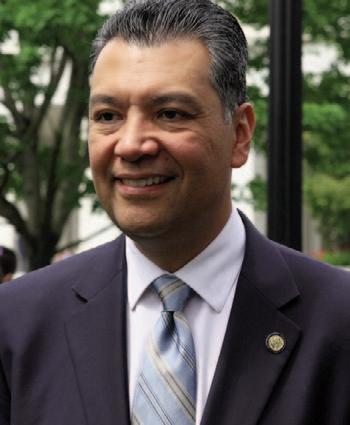
long as the applicant had been here for at least seven years. The bill would not make any changes to the criminal and national security background checks that all applicants must pass before they can receive a green card.
S. 4974 is a companion bill to H.R. 8433, which was introduced in the House of Representatives on July 20 by Rep. Zoe Lofgren (D-CA).
How many people would benefit from the registry bill?
Not all non-citizens who are long-term residents of the United States would qualify for green cards under the registry bill. Some would be ineligible because of criminal convictions or extended absences from the country. However, it is likely that many millions of people would qualify.
According to the Department of Homeland Security, there were 11.4 mil lion undocumented immigrants in the United States as of 2018. Roughly 47% (5.4 million people) had arrived before 2000, while another 37% (4.2 million) had arrived between 2000 and 2009. Most of these long-term residents of the United States would probably qualify for green cards under the new registry bill.
These figures do not even include the many other non-citizens with temporary immigration status who could also be eli gible for green cards under the bill.
Making millions of non-citizens eligible for green cards, and eventually U.S. citi zenship, would also provide a boost to the U.S. economy. According to FWD.us, the roughly 6 million workers who are now undocumented contribute $126 billion to the U.S. economy and pay $35 billion in taxes each year.
If these workers could become U.S. cit izens, their wages would increase. This would raise their annual contribution to the U.S. economy by $83 billion and their tax payments by $27 billion.
So far, the registry bill in the Senate has three co-sponsors. The companion bill in the House of Representatives has 64 cosponsors. Unfortunately, both bills face long odds in the current Congress, but they are important markers that will inform the immigration debate on Capitol Hill going forward.
Both bills also serve as a reminder that a relatively simple change to current immigration law would make green cards accessible to millions of non-citizens.
Opening up eligibility for green cards would give millions of people—many of whom are long-time neighbors, family members, friends, and coworkers—a chance to establish permanent and stable roots in this country.l
If You Build It, ICE Will Fill It / continued from page 1 in the immigrant rights movement have long known: immigration detention is entrenched within mass incarceration in every county and state in the US,” said Mitzia Martinez, Ceres Policy Research. “Racist policing from immigration agents and local law enforcement offi cers feed immigrants into ICE’s deten tion and deportation machine. Communities of color, particularly Black immigrant communities, are targeted most. Shrinking and ultimately abolish ing the detention system must be a prior ity in the fight for immigrant and racial justice.”
“The evidence is clear. Our strategies must include paths to closing these abu sive facilities," said Grisel Ruiz, super vising attorney at the Immigrant Legal Resource Center. “Closing these cages once and for all, and for all carceral pur poses, ensures that fewer families are funneled into the detention and deporta tion system. It ensures that we are free to reimagine a reality we know is possibleone where we divest from cages and invest directly in the health and safety of our communities.”
In this report, Detention Watch Network and the Immigrant Legal Resource Center worked with Ceres Policy Research to compile data from more than

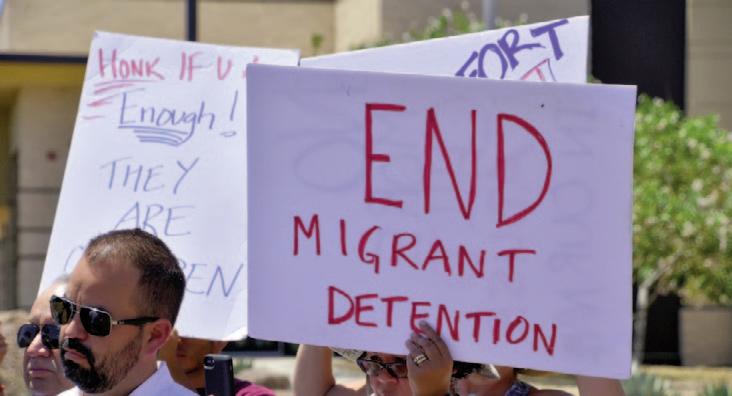
2,600 counties on local detention capaci ty and apprehension rates from a variety of primary and secondary sources, including Syracuse University’s Transactional Records Access Clearinghouse and ICE’s public records.
•Immigrants in counties with a detention capacity of just 50 people are more than twice as likely to be arrested
•The highest number of ICE arrests occur in counties with the highest proportion of criminal law enforcement arrests, and immigrants in these counties were four times more vulnerable to arrest
•The counties with the highest number of apprehensions closely align with the
locations of some of ICE’s largest immi gration detention facilities
"In Philadelphia, we're seeing an uptick in ICE arrests which we strongly believe is linked to the Moshannon Valley Correctional Center, the largest immigra tion detention facility in the Northeast that opened last year," said Erika Guadalupe Núñez, executive director of Juntos. “ICE currently incarcerates near ly 900 people at this facility who are deeply missed by their loved ones and communities. The almost 1,000 empty beds at Moshannon greenlight ICE to violently profile and target immigrants in Clearfield County, Pennsylvania, and beyond. So long as immigration deten tion facilities exist, there will be a
demand to fill them. So long as immigra tion detention facilities exist, we will demand their closure.”
Since its inception in 2003, ICE has built and expanded a massive infrastruc ture of immigration jails, surveillance programs, and enforcement agents. The current enforcement-centered response to migration, supported by ever-increas ing Congressional appropriations, has resulted in hundreds of thousands of deportations each year separating fami lies and communities across the country. Over the last two decades, the budget for ICE’s Enforcement and Removal Operations (ERO), which includes its account for immigration detention, has quadrupled. Prior to the COVID-19 pan demic, detention levels hit historic peaks of more than 50,000 people per day.
Advocates are calling for the elimina tion of detention capacity to keep our communities safe from the clutches of immigrant incarceration, as well as ICE's broader enforcement regime that dis criminately propels people towards deportation. Instead of detention, advo cates are urging elected officials to invest in alternative economies that do not rely on policing and incarceration, and instead address real community needs.l

flu outbreaks and other respiratory conditions pop ping up across the United States, health experts say the nation may be facing an early and severe flu season.
And Black, Hispanic, and American Indian/Alaska Native adults in the United States are more likely to be hospitalized with flu and less likely to be vaccinated against the flu, according to a new CDC Vital Signs report.
The flu (influenza) is a seasonal upper airway and lung infection that causes fever and a cough or sore throat. It is most common during the fall and winter months. Every year, about 2,000 New Yorkers die of seasonal flu and pneumo nia, which can develop as a complication of the flu.
Vaccination is the best way to protect against the flu. The flu and COVID-19 are expected to circulate simultaneously this season, so getting a flu vaccine is more important than ever. Although the flu vaccine will not prevent COVID-19, it will help decrease the risk of you and your family getting sick and needing flurelated medical care.
You can receive the flu vaccine simulta neously as all other vaccines, including the COVID-19 vaccine.

The seasonal flu (influenza) can cause severe illness or complications. Certain groups have a higher risk of developing severe health conditions from the flu.
Flu is most common during the fall and winter months. Peak levels generally occur between late December and early
March. There are many different flu strains, and they tend to change each year.
You can avoid the seasonal flu by get ting vaccinated every year.
Some people are more likely to get severely sick or have complications from seasonal flu. The following are high-risk groups:
· Pregnant people
· Children younger than two or adults 50 and older, especially adults older than 65
· People with any of these medical con ditions
*Asthma or any other chronic respiratory diseases
* Heart, kidney, or liver disease
*Obesity (a Body Mass Index of 40 and over)
*Blood disorders, such as sickle cell ane mia
* Metabolic disorders
* Weakened immune system from illness or medication
*Neuromuscular disorders that interfere with breathing or the discharge of mucus
· People living in nursing homes or other care facilities

· American Indians and Alaskan Natives
People in these groups should call their healthcare provider if they have flu-like symptoms or have had close contact with someone with flu-like symptoms.
Flu symptoms usually start to show one to four days after exposure. Most people are ill for a few days.
Typical symptoms include fever, chills, aches, cough and sore throat. Intestinal symptoms, such as vomiting or diarrhea, are possible but less common. If you have a severe or worsening symptom, such as difficulty breathing, go immedi ately to a hospital emergency room.
Seasonal flu sometimes leads to serious complications, such as pneumonia, hos pitalization or death.
Flu symptoms can be similar to COVID19 symptoms. If you are experiencing these symptoms, get tested for COVID19.l
Getting vaccinated not only protects you, it also keeps you from spreading the flu to others who can get seriously ill — including pregnant people, young children, adults 65 years and older and people with chronic health conditions. For more information, call 311 or visit nyc.gov/flu .
 BY AMERICA’S VOICE
BY AMERICA’S VOICE
Washington, DC: In the home stretch of the midterm elec tions, GOP candidates and outside allies are going into overdrive on racist and nativist advertising and mes saging (as America’s Voice’s GOP ad tracking project details). Notably, the lurid lies and mainstreaming of white nationalist conspiracies are facing no pushback from fellow Republicans. Below, several outlets highlight exam ples of the GOP’s vile focus in the home stretch and the implications:
In the Washington Post, Liz Goodwin writes, “Racist GOP appeals heat up in final weeks before midterms,” stating: “Sen. Tommy Tuberville (R-Ala.) sug gested at a rally in Nevada this month that Black people are criminals. A day later in Arizona, Rep. Marjorie Taylor Greene (R-Ga.) appeared to refer to a specious conspiracy theory about immi grants that has been associated with white nationalists — baseless claims that at least two GOP candidates for the U.S. Senate have echoed. And in Wisconsin and North Carolina, Democratic candi dates for the Senate have faced a barrage of ads on crime that feature mug shots of
Black defendants.
As the campaign heats up in the final weeks before November’s midterm elec tions, so have overt appeals to racial ani mus and resentment. And the toxic remarks appear to be receiving less push back from Republicans than in past years…
… Jonathan Greenblatt, the chief exec utive of the Anti-Defamation League, which works to counter antisemitism, said it has been ‘stunning’ to see a con cept akin to the one shouted by white supremacists in Charlottesville in 2017 — ‘Jews will not replace us!’ — make its
way to the political mainstream in this election cycle.
‘It is not new to see antisemitism or overt racism in politics,’ Greenblatt said. ‘What is new is after years … in which it was clear that to be credible in public life politicians had to reject prejudice, it’s now been normalized in ways that are really quite breathtaking.’”
In Al Jazeera, Jihan Abdalla writes, “Republicans bank on tough immigration line as US midterms near” with a sub header, “Republicans are using antimigrant rhetoric to redirect focus away from other issues before midterms, experts say.” She notes: “Many of the [GOP’s] political ads make false accusations that the Biden adminis tration employs an ‘open borders policy’, while also promoting the false idea that migrants are responsible for bringing illicit drugs, specifically fentanyl, into the country.

These messages, said Zachary Mueller, political director of America’s Voice, an organisation that supports immigration reform in the US, have created a ‘spectre of fear’ about asylum seekers and refugees who are mainly from Central America and have been fleeing poverty, violence, political persecution and cli mate change.
In a July report, America’s Voice iden tified 121 political ads, 334 tweets and 91 campaign emails that referenced “white replacement” and “migrant invasion” in the 2022 election cycle. Both terms are a reference to a false, white nationalist conspiracy theory that claims that global ‘elites’ are deliberately replacing white people in the US with immigrants and people of colour.
‘We’re seeing an increase in the embrace of white nationalist talking points, talking about replacement and invasion,’ Mueller told Al Jazeera. ‘What we’ve seen this year is a real escalation in some of the rhetoric.’”
In his Philadelphia Inquirer column, Will Bunch writes, “Who’s behind those vile, right-wing political TV ads during the baseball playoffs?” highlighting Stephen Miller’s association with the organization “Citizens for Sanity,” which has been running noxious ads with lurid depictions of crime and violence. Bunch writes: “Every few innings, the dark, grainy TV
spots — with a flood of unsettling images of urban crime and civic unrest, or large migrant caravans streaming toward the U.S. border — broke up the stream of otherwise cheerful spots for iPhones or car insurance. One says ‘illegal immigra tion is draining our paychecks, wrecking our schools, ruining our hospitals and threatening your family’ — blaming President Biden, and telling Democrats to ‘stop hurting our children,’ against an ominous, empty playground swing. The crime spot blames liberals for a wave of ‘violence, bloodshed and death’ as men with machine guns roam an urban waste land. You won’t be shocked to learn that the ads are deliberately dishonest … …The required tagline lists the sponsor as a new group calling itself Citizens for Sanity. On one level, thanks to some excellent research by the campaignfinance watchdog Open Secrets, we know a lot about who these Citizens for Sanity are: the very worst, xenophobic remnants of Team Trump, offering America not just a new low for the 2022 midterms but a sneak preview of the nightmare that the 45th president’s 2024 comeback crusade is likely to be.
Open Secrets reports a close overlap between the trustees of Citizens for Sanity — as identified to the Federal Communications Commission, or FCC — and the pro-Trump America First Legal Foundation, which is spearheaded by Stephen Miller, the former Trump White House official behind harsh immi gration policies such as family separation at the southern border.”
According to Zachary Mueller, Political Director for America’s Voice:
“To a deeply disturbing degree, Republicans are relying on nativist lies and white nationalist conspiracies as a core part of their midterm closing argu ment, while the remainder of the GOP, including its leadership, languishes in complicit silence.
Notably, the men instrumental in family separation are now trying to be Lee Atwater for the social media era, walking right up to the line of explicit racist appeals to voters. As part of our ongoing GOP ad tracking project and its ad data base, we upload ads we encounter to YouTube so that they are archived if campaigns take them down. It’s a sign of the GOP times that YouTube’s content moderators flagged one of the latest Stephen Miller-allied ads we attempted to post as violating its standards for vio lent or graphic imagery.
Unfortunately, the murders in Buffalo, Pittsburgh, El Paso and the recent migrant shootings in West Texas and another plot to kill migrants uncovered in Missouri offer real world examples of why the embrace and mainstreaming of these lies and this hatred is so dangerous. Regardless of the political efficacy of these GOP tactics, they court violent big otry throughout the nation and are a cor rosive acid to the promise of a multiracial democracy.”
York, NY: New York City
School Chancellor David Banks gave an update today on the Department of Education’s efforts to welcome newly arrived immigrant chil dren. The NYC School system has enrolled more than 5,500 new migrant students, and is working to provide trans portation, food, language assistance, and mental health services to these new stu dents.
New York City Comptroller Brad Lander issued the following statement regarding the support needed for individ ual schools to be able to serve the new students joining their classrooms:
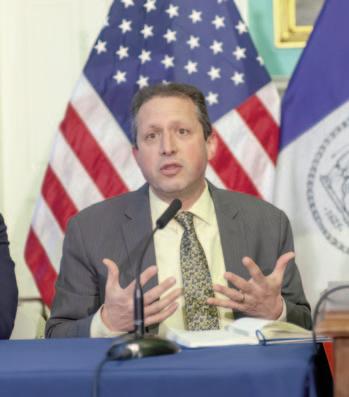
“In the past several months more than 19,000 migrants have arrived in New York City, including 5,500 students who entered the public school system. These children – who have little English profi ciency, varying degrees of grade level readiness, possible special education needs, and extreme trauma to overcome – need extensive academic and social emotional support. Chancellor Banks,
the NYC Department of Education, par ent volunteers, and the dedicated educa tion professionals in our schools deserve praise for working hard to welcome them with open arms and rising to this chal lenge.

“In order to meet the needs of these stu dents and schools, my office estimates that NYC Schools need at least $34 mil lion in Fair Student Funding.
“Yet this year, over three-quarters of public schools experienced nearly half a billion dollars in Fair Student Funding cuts that caused loss of staff and pro gramming. Schools where enrollment exceeded DOE projections this fall are already operating at a deficit of staff, and now face even greater shortfalls as they take in new students who they were not budgeted to support.
“The Department of Education must move swiftly to provide schools with the necessary funding to support students from migrant families. We cannot wait until the mid-year budget adjustments to begin to hire the staff needed at schools that are seeing entire classes of new stu dents arrive.
“Schools doing this critical work to embrace these new students cannot stretch their current resources until feder al funding arrives. The City should immediately allocate $34 million of Fair Student Funding to enable principals to staff up to serve their new students.”
Background: The Comptroller’s office’s new analysis finds that DOE would need to allocate at least $34 million in Fair Student Funding (FSF) to schools to support these new students. This $34 million does not include the estimated $10 million in pro grammatic funding needed for Universal Pre-K and 3K seats for newly enrolled students or the funding that might be needed for children with disabilities who likely do not have IEPs, which could rep resent up to $5 million more once they are evaluated.
At the individual school level, PS 124 in Brooklyn, located across the street from two family shelters, budgeted for 215 students, yet has more than 35 new migrant students as of this month. We estimate PS 124 should receive at least $223,000 in additional FSF for their new students. So far the school has only received an additional temporary guid ance counselor, but no new funding or bilingual teachers or staff. l
Weall want to live long, healthy lives filled with happiness. No one wants to think about con tingencies for if the worst might happen. However, if something unfortunate hap pens, you want to make sure your loved ones will have the right care and financial resources. This is even more essential for those families who have children with special needs.
Thinking about estate planning, wills and trusts can cause stress. The complex ities of retirement plans, taxes, life insur ances and medical care can overwhelm anyone. But it's best to face the hardship of getting your affairs in order now, espe cially while you are healthy and thinking clearly.

You don't want to leave these crucial decisions to a friend, loved one, or judgeappointed representative. No one knows better than you how to care for your child. Make sure that they always receive the best support by setting up the proper plan now.
Estate planning, wills and trusts can bring about a lot of unknowns and com
plexities. In this article, we will break down the essential steps you need to take to create an effective plan for the proper care of your child.

Putting everything in order for when you're gone can feel overwhelming. It's hard to know where to start or how to reach out for help. Most parents already feel run down by the hustle and bustle of modern life. When you're a parent of a child with special needs, you also devote a lot of time to caregiving.
Where do you find the time to tackle a project like this? By taking it one small step at a time with manageable goals. It will amaze you how much you can get done using this strategy. Soon, you won't feel intimidated by things like retirement plans, life insurance policies, complexi ties of tax laws, and special-needs trusts.
Planning for something like this is an enormous task, so ask for help when you need it.
Start by finding the right legal counsel for


sound advice. Lawyers who specialize in special-needs trusts can help you under stand the ins and outs of these unique sit uations. They can also offer expert help in drafting all the right documents.
Another must-have team member is the right financial advisor. Seek an advisor who has specific training in helping fam ilies of children with special needs. You'll want to look for the chartered specialneeds consultant (CHSNC) designation. To find a financial advisor with this type of training, try searching on The American College of Financial Services.
If you set up a special-needs trust, you will need to designate someone as the trustee. This is the person who has total control over the trust. It is essential you designate someone you know can fill this vital role. If you are not sure whom to designate as the trustee, consult with your lawyer and financial planner for advice.
When tackling something like estate planning, wills, and trusts, you will need to gather a lot of essential information on yourself and your child/children.
The following list provides some help ful starting points but is not all-inclusive:
•Personal Information (birthdates, Social Security numbers, birth certificates)
•Emergency Contacts (names and phone numbers)
•Medical Providers (names and contact info.)
•Medical History (including medications and allergies)
•Medical Insurance (policy numbers)
•Financial Information (retirement plans, life insurance, other sources of income)
•Attorneys (names and contact info.)
•Financial Advisor (name and contact info.)
•Banking Information (account numbers, safe deposit box keys)
•Accounts and Passwords (for all the above)
Your attorney and financial advisor will help you round out the rest of the essen tials.
Once you have everything organized, you need to decide where to store it. Do you want to use a traditional filing cabi net or go digital? Other options are a per sonal safe or a safe deposit box in a bank.
Whichever you choose, make sure your designated trustee has the keys and pass words to access this vital information.
Update this information as needed. You
may change your mind about certain details a few years from now or change passwords to certain accounts. Make sure your appointed trustee always has the most up to date information.
By getting everything organized and stored in one location, you will save your trustee, friends, or family members weeks or months of headaches in track ing this information down.

One of the most important things to know about a special-needs trust is that it will allow your child to remain eligible for public assistance like Supplement Security Income (SSI) and other pro grams. If you leave your assets directly to your child instead of in a special-needs
trust, those assets can disqualify your child from public assistance programs.

The same goes for grandparents or other family members. If they plan to leave any assets to your child after they pass, make sure they have those assets go to the special-needs trust, not directly to your child.
The reason for this is that a specialneeds trust is treated as separate from the disabled individual. When you set up a special-needs trust as part of your estate plan, you want all assets to be held with in that trust.
Another critical component to under stand about a special-needs trust is IRA retirement plans. You cannot directly assign the payout of your IRA to go into a special-needs trust. You can, however, name the special-needs trust as the bene
ficiary of that IRA. The same can go for life insurance policies.
By doing this, withdrawals from your IRA retirement plan will go into the spe cial-needs trust over your child's life expectancy. There are other considera tions like the tax advantages of Roth IRAs, but it is best to go over these details with your financial advisor.
Setting up an estate plan for your child with special needs can seem like an insurmountable task. However, by fol lowing these steps, you can put the right plan in place for the benefit of your child. You can rest easier knowing they will have the care they need after you're gone.l
Thinking about estate planning, wills and trusts can cause stress. However, if something unfortunate happens, you want to make sure your loved ones will have the right care and financial resources. This is even more essential for those families who have children with special needs.

Disturbingly, domestic violence remains a pervasive issue in New York, including here in Queens. The most recent police data on domestic violence show that over 8,000 Queens residents reported incidents of domestic violence in 2021, and these data only capture cases reported to police. It’s imperative that we address root causes to prevent domestic violence and provide resources and support to those who do experience it.
Domestic violence broadly encompass es intimate partner violence, family vio lence, elder abuse, sexual violence, stalk ing, and human trafficking. According to the New York City Department of Social Services, domestic violence and abuse against an intimate partner, family mem ber, or someone else in the home can look like: hitting, slapping, kicking, or any other kind of physical violence; forc ing sex or other sex acts; threatening vio lence; insulting and criticizing; and stalk ing, obsessively checking-up on, or oth erwise trying to control behavior. If you or someone you know is experiencing this kind of violence or abuse from an

intimate partner, family member, or someone else in the home, please call New York City's 24-hour Domestic Violence Hotline, 1-800-621-HOPE.
New York City and State agencies and the community-based organizations they partner with provide myriad services to survivors of domestic violence and their children, including temporary housing, emergency shelter, supportive services, and legal services. All programs offer safe environments as well as counseling, advocacy, and referral services. One such program is the City’s Family Justice Centers (FJCs), which provide free and confidential assistance, either in person
or over the phone, to anyone experienc ing domestic or gender-based violence. All are welcome regardless of language, income, gender identity, or immigration status. Interpretation services are avail able at every FJC, and locations are wheelchair accessible. The NYC Family Justice Center, Queens phone number is 718-575-4545. l
Editor’s Note: Are you an immigrant in an abusive relationship? Regardless of immigration or citizenship status — you may be eligible for immigration-related protections. Get a confidential legal con sultation, call 855-768-8845.
 Editorial credit: Rena Schild Shutterstock.com
Editorial credit: Rena Schild Shutterstock.com
NewYork, NY: U.S. Judge Andrew Hanen of the United States District Court for the Southern District of Texas issued an injunction preventing the Biden adminis tration’s recent DACA regulation from taking effect. This is not a final ruling, and while DACA still stands for existing recipients and renewals are allowed, no new or lapsed applications will be processed. The New York Immigration Coalition denounces this decision that cruelly endangers millions of current and potential DACA recipients, and demands President Biden and Congress pass a pathway to citizenship.
Murad Awawdeh, Executive Director, New York Immigration Coalition:
Contact:
“Today’s decision from Judge Hanen is a clear injustice for the millions of people who are American in every way except for legal status. Despite contributing to our country, raising families, paying taxes, and joining the workforce, DACA holders and Dreamers remain under con stant threat by Republican leaders and conservative courts. Judge Hanen’s farright ruling is a direct assault on the lives of 1.2 million people and their families, and is a national disgrace. As conserva tive courts continue to be hostile to Dreamers, this latest ruling only illus trates the extent of their anti-immigrant agenda. The Biden administration and Congress have no more excuses to delay passing permanent protections and a pathway to citizenship, as millions of people and families continue to be held hostage by the courts with no sign of relief.”l


Founded in 1987he New York Immigration Coalition (NYIC) is an umbrella policy & advocacy organization that represents over 200 immigrant and refugee rights groups throughout New York.

Are you looking to get into the health & wellness business?
are good. Humans need to be in relationships. You stay connected when you are in a relationship. But what if the relationship is toxic? Is it better to be in a toxic rela tionship or not to be in a relationship at all?
You could get involved in a toxic rela tionship without realizing it. People who are controlling usually don't show that side of themselves at the beginning of a relationship. However, you should be aware of the signs. Here are a few red flags that your partner is a control freak.

The most obvious sign of a controlling partner is they will attempt to control your actions and behavior. They may seem helpful by picking out your clothes or budgeting your finances. However, these are control tactics. They will take control of the finances and dictate what you spend. Those tactics will spread to all areas of the relationship until they have complete control.

A controlling partner will try to isolate you from your family and friends. This tactic is a ploy to separate you from your
support system. They may start by mak ing comments about how much time you spend with family and friends. They may try to make you feel guilty about not spending more time with them. They may also try to start arguments between you and your friends to drive a wedge between you.
If you are fortunate enough to spend time with family or friends, a controlling part ner will keep tabs on you. They may call or text you numerous times. They will want to know your whereabouts, who you are with, and what you are doing. They want to know when you are coming home. They also make excuses to get you home.
If a controlling partner calls or messages, they expect an immediate response. The controlling partner gets angry when you don't respond to them right away. Their anger usually results in drama at home. However, they will try to smooth things over by telling you how worried they were.
Control freaks also like to have authority. They want to be in charge of everything.
That includes all decisions you make. They want to have input and be the final authority in all matters. If you make deci sions or purchases on your own, it will likely result in an argument. However, if you try to exercise authority over a con trol freak, they will become angry.
You will have difficulty getting a con trolling partner to compromise. They think they know what is best for you, so they see no reason to compromise. They will find a reason to convince you that their way is better.
Controlling partners will criticize you every chance they get. They will make it sound as if they are trying to help you.
They also like to have leverage over you. For instance, they may try to keep you in the relationship by threatening to take the kids and denying you contact.
Recognize the signs of a controlling rela tionship. Don't make excuses for your partner. People will often defend control ling behavior by saying that their partner is just protective. Watch for red flags and take things slowly. If the controlling behavior continues to worsen, consider leaving the relationship. It may be best to walk away in the early stages of the rela tionship before becoming too deeply enmeshed. If you want to work things out with your partner, seek the assistance of a professional therapist.l
According to statistics, car acci dents are among the leading cause of deaths among children in the USA. About 45% of deaths among children are because of car accidents. What can you do if there is a car accident involving your child? During this diffi cult time, you need a strong advocate on your side like the attorneys at the Personal Injury Law Firm of Figeroux & Associates.
How can we deal with the greater risks that children face when it comes to car accidents? Child victims in car accidents can be placed in two categories. There are those who are passengers and there are those who are pedestrians. It is important to realize that a lack of precau tionary measures has been the main rea son for child victims of car accidents in both scenarios. Children need keen supervision whenever they are walking along the road, crossing a road or in any other situation where they are interacting with traffic. Further, they need to be looked after when in transit aboard a vehicle and the necessary precautions taken so as to ensure they remain safe under any circumstances.
For child pedestrians the following meas ures can help reduce the risk of accidents among children.
1.Close supervision of children at all times when near a road.
2.Training of children in road safety and teaching them safe road use.
3.Educating drivers and other road users on “Child safe road use.”

Reducing the risk to child passengers can be done by taking the following steps:

1.Always ensure that the child is safely secured in the vehicle.
2.Discourage risky activities and play while on board a car.
3.Avoid any showmanship and road rage as you drive because this will set a poor example for the children in your vehicle.
4.Train the children on safety while on board a vehicle.
While these measures will not eliminate child victims of car accidents, they will greatly reduce the risk children face while traveling along the roads or when in a car.

A personal injury attorney specializes in helping victims obtain settlements by providing legal assistance and advice after a car crash. The attorneys at the Personal Injury Law Firm of Figeroux & Associates possess a wide range of expe rience and the expertise needed to advo cate for children who have been in car accidents. The lawyer you hire does make a difference! Call us at 855-7688845 or schedule an appointment at www.askthelawyer.usl

The lawyer you hire, does make a difference!
